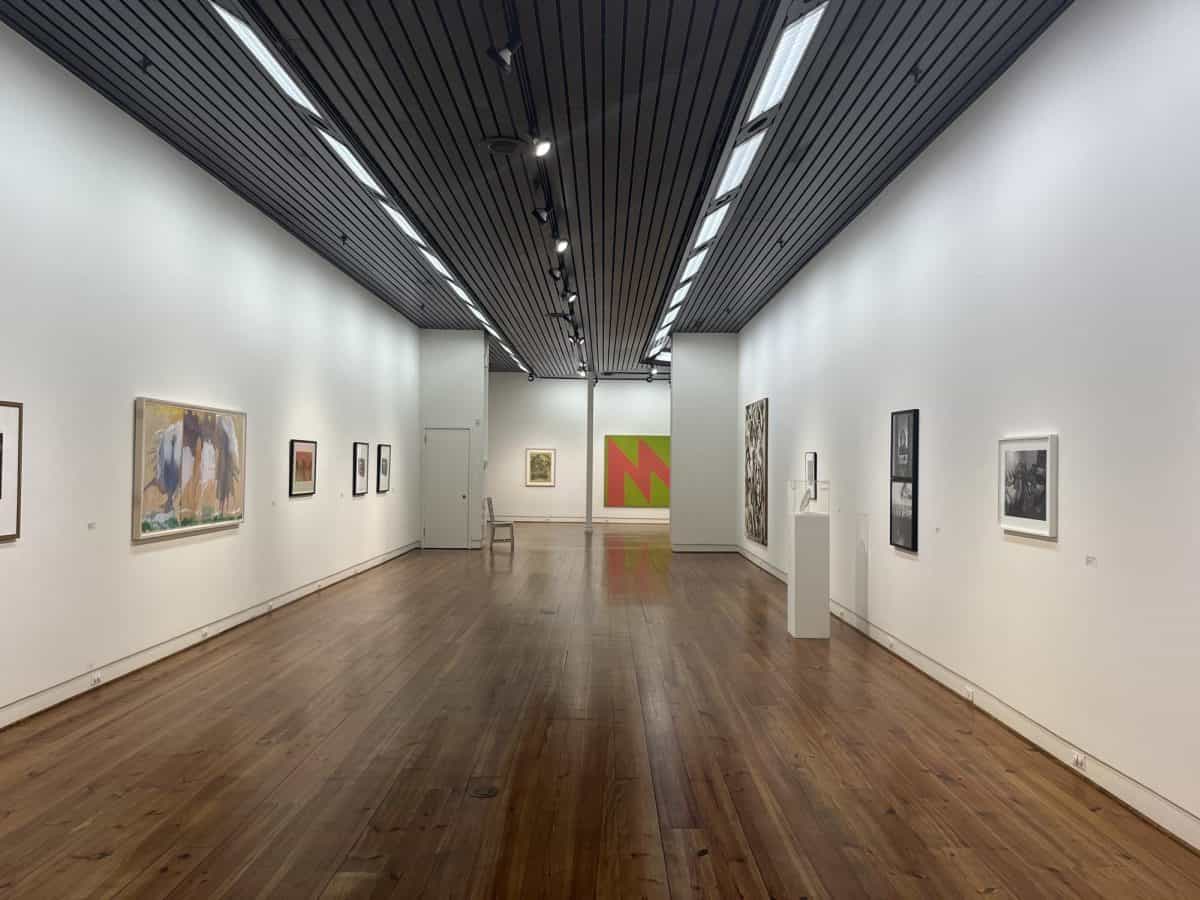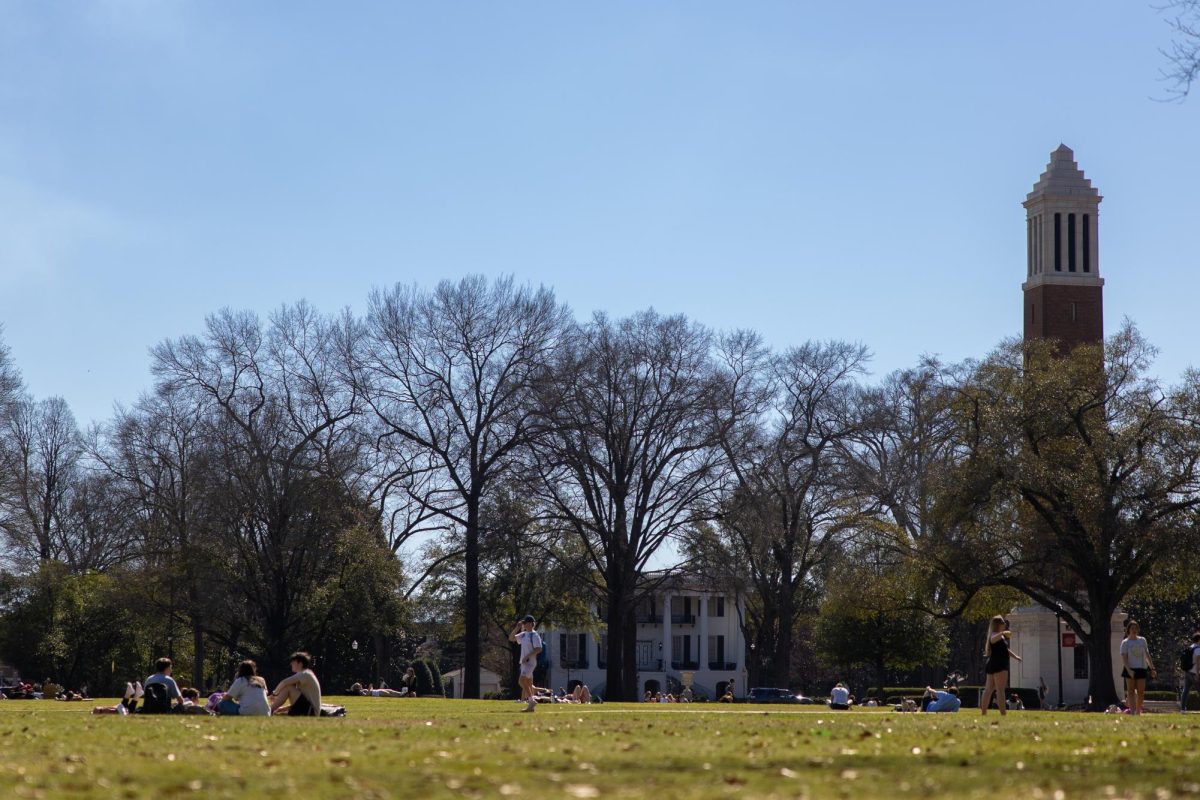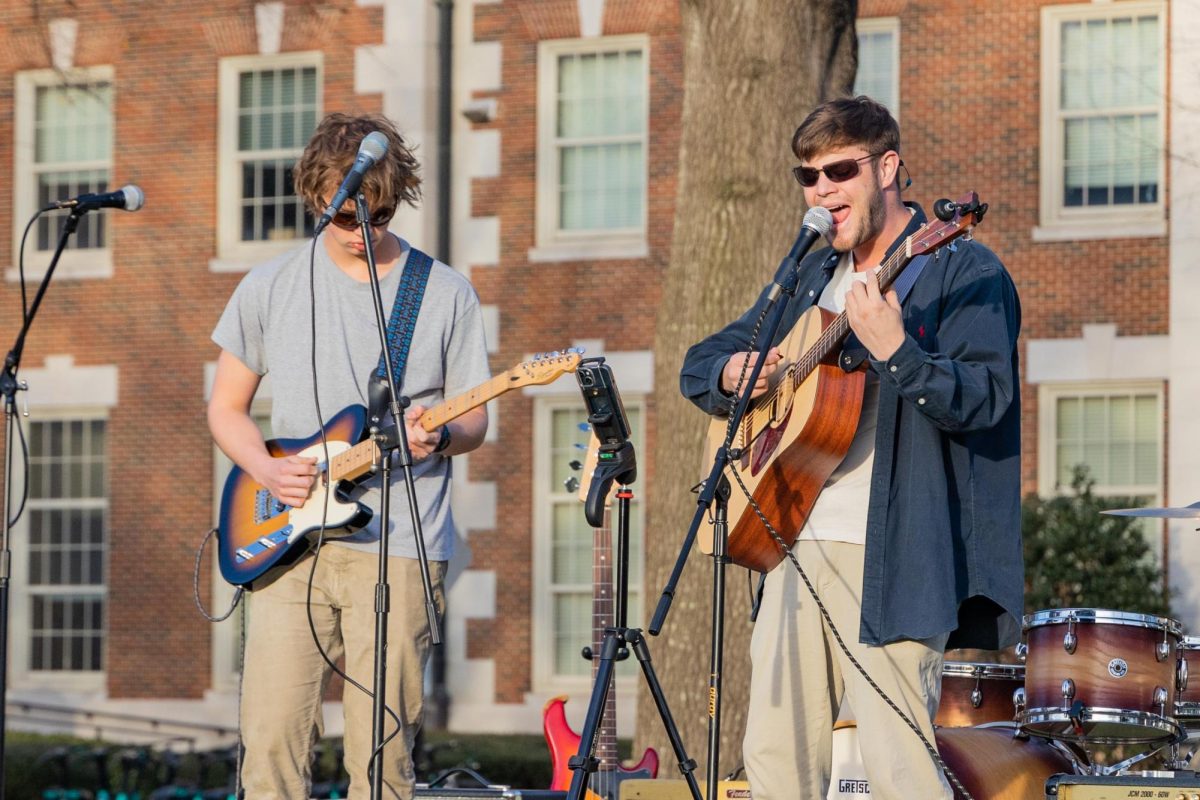“Tracking: A Long Gaze at Contemporary Art” showcases a diverse array of art for both UA students and the larger Tuscaloosa community to enjoy free of charge. The exhibition runs until Sept. 25 at the Sarah Moody Gallery of Art.
With works dating back to 1931, the exhibition displays nearly a century of American contemporary art.
“We are a contemporary space, so that’s really all we do as far as time frame,” said Vicki Rial, the exhibitions coordinator for the Sarah Moody Gallery of Art.
While the term “contemporary art movement” is popularly used in reference to art created from the 1970s and onward, the compilation’s earlier pieces challenge artistic conventions and prioritize visual interest over aesthetic harmony, highlighting the early stages of the movement long before its official inception.
This expansive timeline is evidence for the advancement of contemporary art as well. Throughout the exhibition, the evolution of artistic styles, particularly developments in the creative media used by contemporary artists, can be seen shifting and progressing over the years.
In total, the display features work from over 30 artists, with notable contributors including William Christenberry, Chuck Close and Lee Krasner. Each artist lends a unique style to the exhibit, and these quirks and intricacies are brought together to provide viewers with a comprehensive overview of contemporary art.
Christenberry, a Tuscaloosa native who died in 2016, crafted one of the exhibit’s featured pieces: “Moundville.”
Made of oil paint on linen fabric, “Moundville” is an abstract work that emphasizes bold color and emphatic lines. The sharp color contrasts from teal to red to purple, and the hectic linework gives the piece a sense of energy and life, not unlike the state of Alabama that Christenberry so often sought to depict in his art.
Though he worked in multiple mediums, the main body of Christenberry’s work is photography, which he primarily used to highlight scenes of the rural South. The gallery presents a few of these photographs alongside “Moundville,” giving a more complete picture of Christenberry’s body of work.
While all the works of art combine to yield an impressive exhibit, there are some standout pieces viewers should keep an eye out for.
Robert Kushner’s “Red Gladiolus” is particularly captivating. This unique depiction of a gladiolus flower is made of oil, acrylic, gold leaf, silk, paper, sequins and even beads to craft a red and green dichotomy that lends the piece a whimsical, abstract look.
“That’s just a magnificent piece,” Rial said of Kushner’s work. “I was here when we chose that piece, and here when it arrived. It’s just sort of meaningful, it reminds me of good times because he [Kushner] was one of our best guests.”
Kevin Sudeith’s untitled work is a rare spot of darkness amid an otherwise very colorful display. His layered use of ink on paper explores shape and negative space with an expert hand.
Perhaps the most notable piece of the exhibition is Donald Baechler’s “The Days of the Week.”
Seven woodcut prints mounted in a line down the front wall are the first thing viewers see when they step into the gallery, and for good reason. Each print features a different woodcut flower printed in red and green over a gradient backdrop of blue, yellow and orange. The crisp lines and eye-catching motifs create an overall feeling of unity despite the variations between each individual print. As distinct in style as it is in concept, this series of prints is the star of an already strong artistic experience.
The rest of the gallery maintains this pattern of mixing media. Photography displayed alongside paintings and lithograph prints, watercolor on cardboard, woodcut etchings and even a glazed dinner plate give the exhibition a high degree of visual interest, showcasing the contemporary art movement through a variety of lenses.
Individually, most of these pieces bear no resemblance to each other, but the carefully cultivated variety of art gives the gallery a cohesive feel and leaves the viewer with the impression of a unified collection.
“The variety of styles and mediums creates a unique collection,” said Emily Elsbernd, a sophomore majoring in chemical engineering. “I think most anyone could find a piece they like or relate to because of this. It’s an enjoyable experience even if you’re a casual observer.”
The gallery is an untapped resource for many UA students, one that Rial encourages students to take advantage of.
“We do four to five shows a year, we show work by nationally and internationally renowned artists, we have a large permanent collection, and we’re adding to it every year, so students should come by and see what their university has for them,” Rial said.









